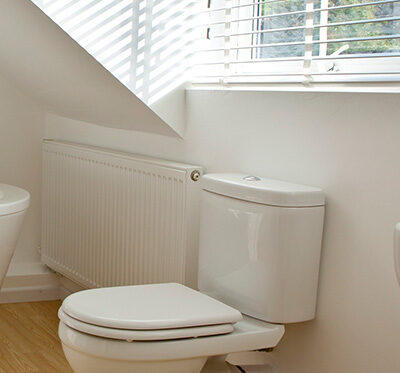Embarking on a bathroom renovation involves more than just choosing stylish fixtures and tiles. Plumbing plays a crucial role in ensuring that your newly remodeled space is both functional and comfortable. From optimizing pipe layout to maintaining adequate water pressure, every plumbing detail can significantly impact the overall success of your renovation. By understanding and addressing key plumbing considerations, you can enhance the efficiency and durability of your bathroom, ultimately leading to a more satisfying and effective remodel.
Benefits of Remodeling Your Bathroom
Remodeling your bathroom offers both practical and aesthetic advantages. It provides an opportunity to address and rectify plumbing issues, such as damaged pipes and leaky fixtures, enhancing the room’s functionality. Beyond fixing problems, a remodel allows you to incorporate features such as a water closet to house your toilet to increase privacy and help maintain a cleaner space.
Updating outdated fixtures, such as an old tub or sink, not only refreshes the look of your bathroom but also contributes to its efficiency. Installing water-efficient fixtures can lead to significant savings on utility bills. Additionally, consider enhancing your bathroom with modern amenities such as a bidet for improved hygiene, or a luxurious walk-in shower to add a touch of elegance.
Modern appliances and thoughtfully designed plumbing can transform your bathroom into a serene retreat, perfect for relaxation. Additionally, a well-executed bathroom remodel can boost your home’s market value, making it more appealing to potential buyers. A contemporary, stylish bathroom can be an important factor in attracting interest and adding unique charm to your property.
Essential Plumbing Considerations
It’s important to focus on key plumbing elements that will impact both functionality and efficiency to ensure a successful bathroom renovation.
Pipe Layout and Routing
When developing plans for your bathroom renovation, be sure to think about the location and orientation of your pipes, since properly placing them will ensure that water flows effectively to all of your fixtures and that there are no leaks. With careful planning, you can generate a pipe layout that avoids costly errors and meets local codes.
Water Pressure and Flow Rates
Maintaining proper water pressure and flow rates is essential for a well-functioning bathroom. Low water pressure can result in lackluster showers, while high pressure can cause long-term damage to your plumbing. Your bathroom’s plumbing system should be designed to deliver optimal pressure and flow rates for all your bathroom fixtures.
Drainage and Ventilation
Good drainage is essential in a bathroom renovation, as it prevents mold growth and water damage, saving you from costly repairs down the road. Equally essential is effective ventilation, which helps control humidity, reduces moisture-related issues, and improves indoor air quality. Proper ventilation also keeps your bathroom environment clean and free of unpleasant odors.
One effective way to enhance ventilation is by updating your bathroom exhaust fan. An exhaust fan draws moist air out of the bathroom and expels it outside. A bathroom exhaust fan with a high cubic feet per minute (CFM) rating will efficiently remove excess moisture and improve air circulation, making your bathroom a more comfortable and healthier space.
Hot Water Heater Location and Capacity
Many homeowners choose to replace their water heater during a bathroom renovation. Since a significant amount of hot water is used in this space, upgrading or relocating the water heater can enhance both efficiency and convenience. Positioning the water heater closer to the bathroom minimizes the distance hot water must travel, reducing heat loss. This allows it to deliver hot water more quickly and lowers energy waste, reducing utility bills. Additionally, having the water heater in a convenient location makes maintenance and repairs simpler and less disruptive. When renovating a bathroom, it’s also an ideal time to ensure that your water heater’s capacity meets your current needs.
Toilet and Sink Placement
The placement of sinks and toilets plays a crucial role in a bathroom remodel’s aesthetics and functionality. For instance, if you plan to install a toilet within a water closet, ensure ample space for comfortable movement and accessibility. The water closet should provide enough room for easy entry and exit, as well as sufficient clearance around the toilet to avoid a cramped feel.
When it comes to sinks, positioning them centrally within the room is often ideal. This placement allows for easy access from multiple points and facilitates better flow within the space. Additionally, placing the sink toward the center helps balance the room’s plumbing design.
Plumbing Codes and Regulations
Ensuring that your bathroom renovation complies with plumbing codes and regulations is crucial. These codes are designed to guarantee proper ventilation, efficient plumbing, structural integrity, and protection against electrical hazards.
For instance, the mandate is that bathroom sinks have a minimum drain size of 1.25 inches to ensure proper drainage and prevent clogs. Adhering to such specific codes helps ensure that your renovation meets official standards and passes inspections. Following these regulations can help you avoid costly last-minute fixes and delays, making your renovation process smoother and more predictable.
Upgrading Old Pipes
Replacing outdated plumbing is essential when remodeling a bathroom. Old pipes are prone to bursting, clogging, and causing water damage, which can lead to costly repairs and significant disruptions to your family’s daily routine.
For example, PEX (cross-linked polyethylene) piping has become a popular choice due to its flexibility, resistance to corrosion, and ease of installation. Unlike traditional metal pipes, PEX is less likely to burst in freezing conditions and is more resistant to scaling and corrosion. Additionally, PEX pipes are often easier and quicker to install, reducing labor costs.
Another modern option is CPVC (chlorinated polyvinyl chloride) piping, which is known for its durability and resistance to high temperatures and corrosive materials. CPVC pipes can also handle higher water temperatures compared to traditional PVC and have a longer lifespan.
You can improve water pressure, flow, and overall efficiency by upgrading to these modern materials. These advancements also contribute to better water quality and ensure that your plumbing system meets current construction standards, providing you with a reliable and long-lasting solution.
Budget for Unexpected Plumbing Issues
Proper budgeting is crucial for the success of any bathroom renovation, especially when it comes to plumbing. Start by assessing the scope of your plumbing work, which may include tasks such as replacing old pipes, installing new fixtures, and making other modifications.
Obtain detailed quotes from a qualified plumber to understand the costs associated with materials and labor. It’s also wise to allocate additional funds for unforeseen issues, such as code violations or problems with your home’s plumbing unrelated to the bathroom. These may include issues with your sewer line or the main freshwater line at your residence.
Contact the Professionals
At Delta Mechanical, our team is ready to make sure your bathroom remodel goes smoothly. We also help homeowners in Tempe, AZ, with kitchen remodeling, sewer line maintenance, sump pump installations, water leak detection, water treatment solutions, and more. Contact us today to schedule an appointment with one of our experienced team members to revamp your home’s plumbing.


